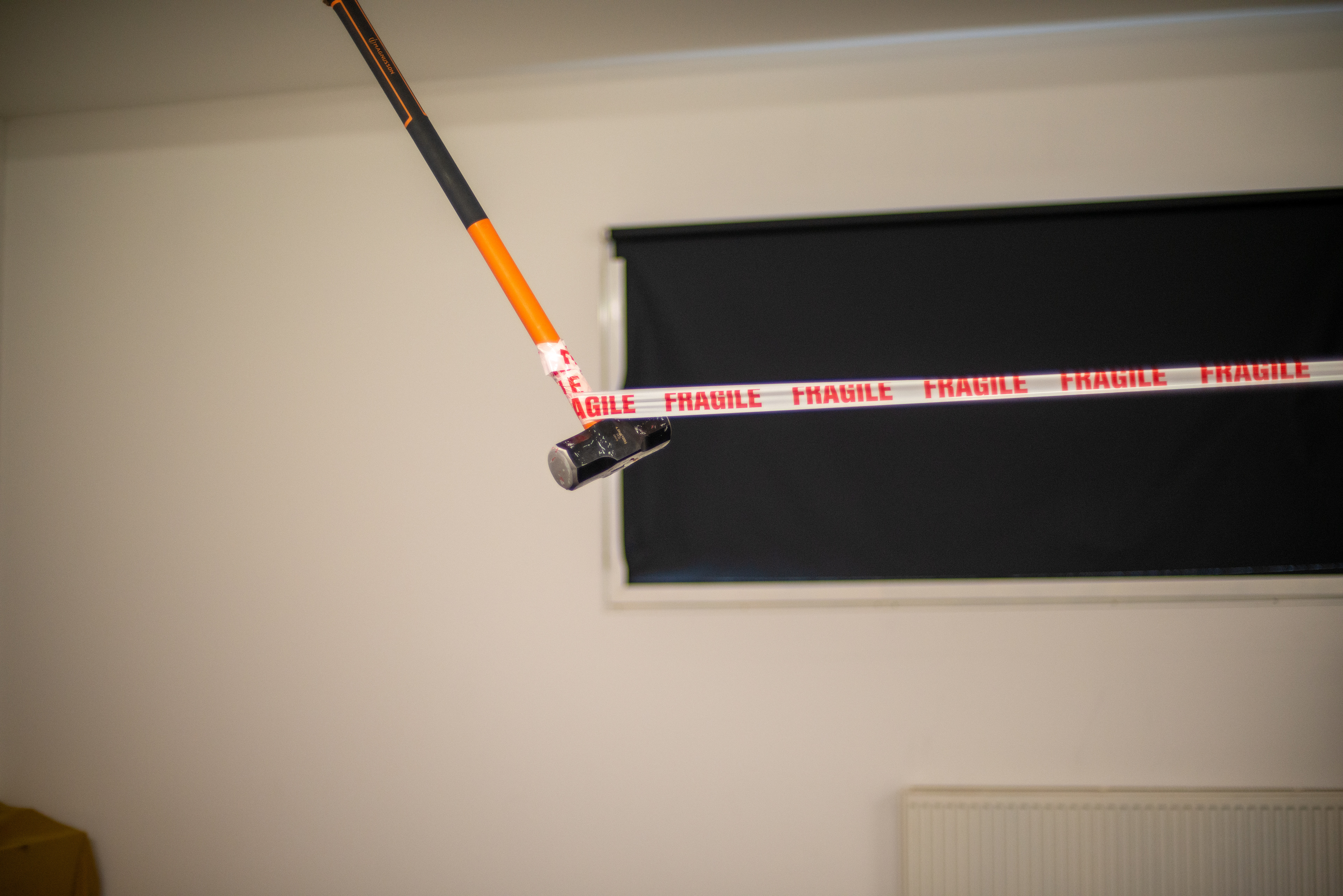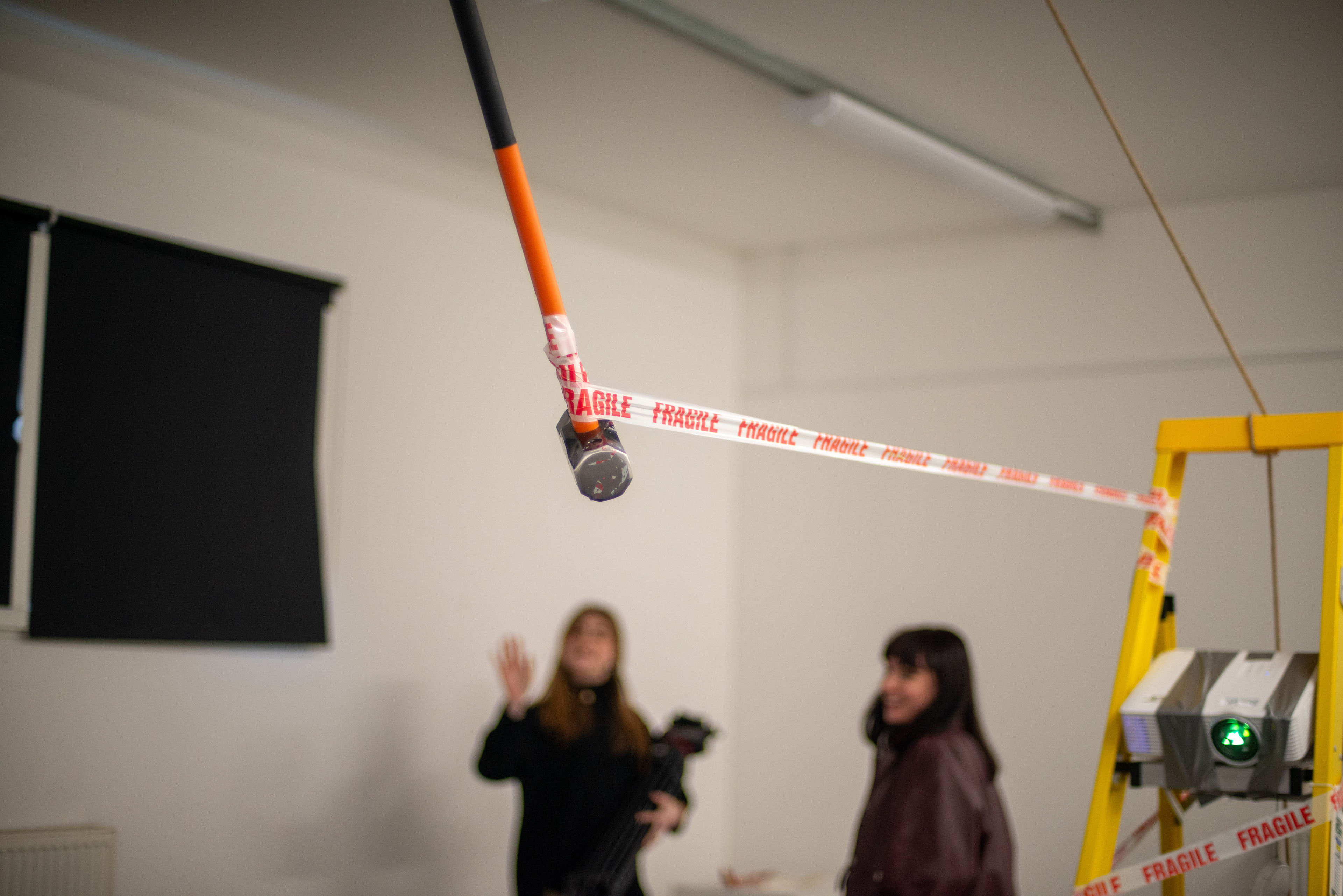"This must be a Thursday: I never could get the hang of Thursdays." — Douglas Adams.
On this particular Thursday, my computer was not a fan of having MAX run three inputs (camera, button, activation wires), thirty-two video feeds, plus the four camera live feeds, the projector output and the speakers. It worked, but at approximately one frame per second, with a camera lag of about half a minute. We still had the issue of the radio audio that Tess put together, and how to run that from the laptop without having the world's tautest aux cable slicing the room in half. With about 30 minutes to go, we had to rethink a lot. "What could possibly go wrong?" certainly seem like famous last words.
I put all the video clips together so they would be one video file, significantly reducing the strain on MAX. However the nature of the videos, starting one at a time and all being different lengths, added to the difficulty of this — the video had to be able to loop 'infinitely' until the button is pressed, and ideally increase in volume and brightness and 'overwhelming-ness'. The video ended up being around 20 minutes, cutting at a point where it could be lead straight in to a looping eight-minute video that would play in perpetuity. Up next: exporting that. "About 15 minutes" was my estimated time. We then began viewing the installations. We went to the first two while Premier was exporting, then I rushed back to check on the progress before the next one, and although it must have been at least half an hour, it was whirring away saying it had eight minutes to go. The issue, of course, was that I still had MAX open, with everything plugged in, all shooting out to the projector. If I closed MAX, I would have to start again from scratch; but if I left it open, Premier would likely refuse to finish exporting without creating enough heat energy to fuel a small city. On top of this, the battery of my Mac was quickly winding down, and the only charger I had with me was a little 30-watt one which didn't even touch th power it needed, so it was now still going down, just slightly slower. I decided we had to cut our losses here, and so I stopped the export. My laptop actually started charging now, and the video had exported up until around 10 minutes. This would be enough. Initially we had spoken about having the video just playing constantly, allowing people to come and go as they please, and with it all gradually getting more and more overwhelming until someone finally cracks and presses the big red button. Now, all this meant was that we would have to exhibit our installation as a one-time, one-screening event. We would get people into the room, start the video, and let it run its course. If it got too close to the end, I would encourage Johnny to encourage someone to press the button, but hopefully it would all just happen naturally.
Over lunch, we finished off everything else with the physical aspect of the installation. I set the projector to display the first frame, and then photographed everything for our documentation (below).
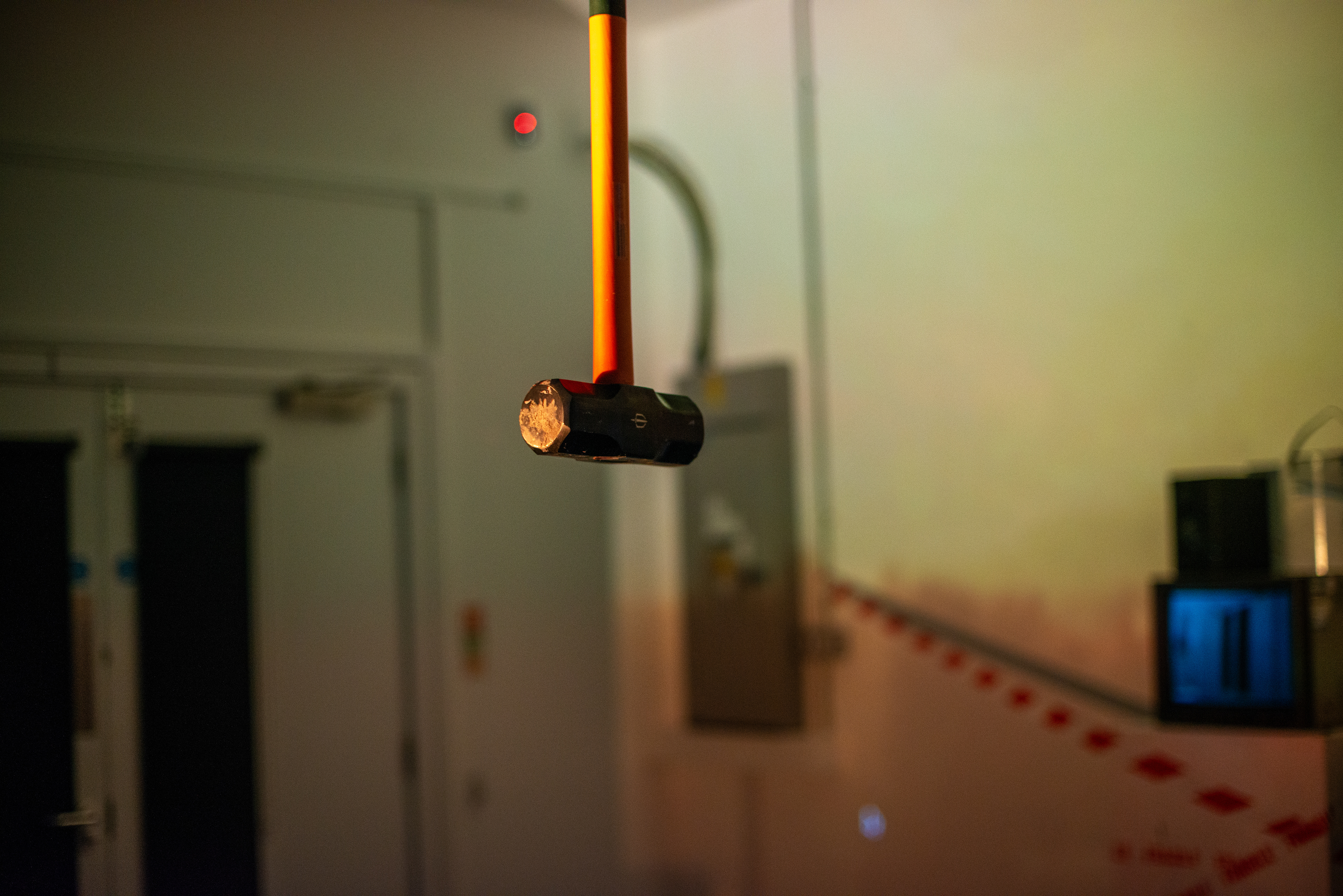
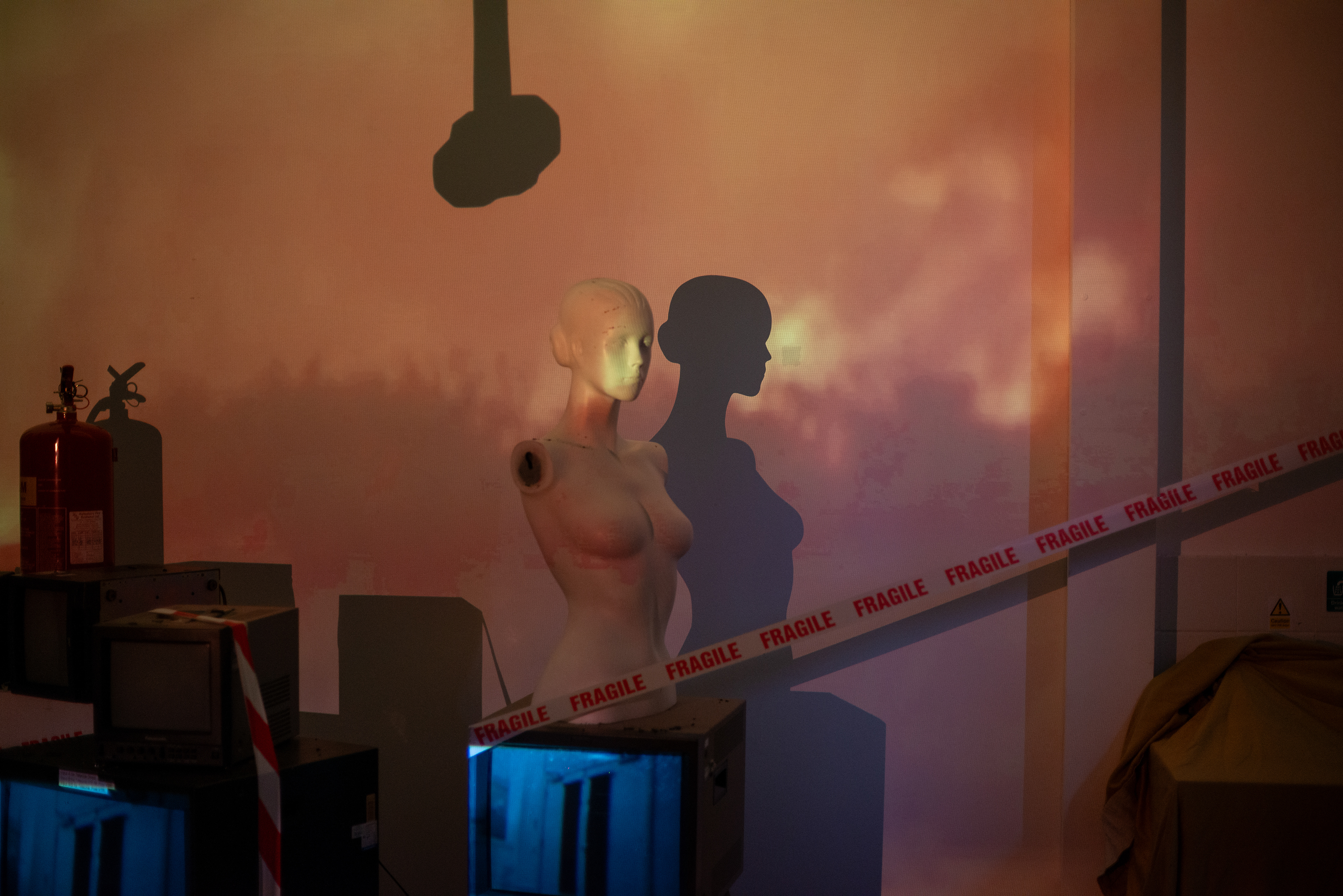
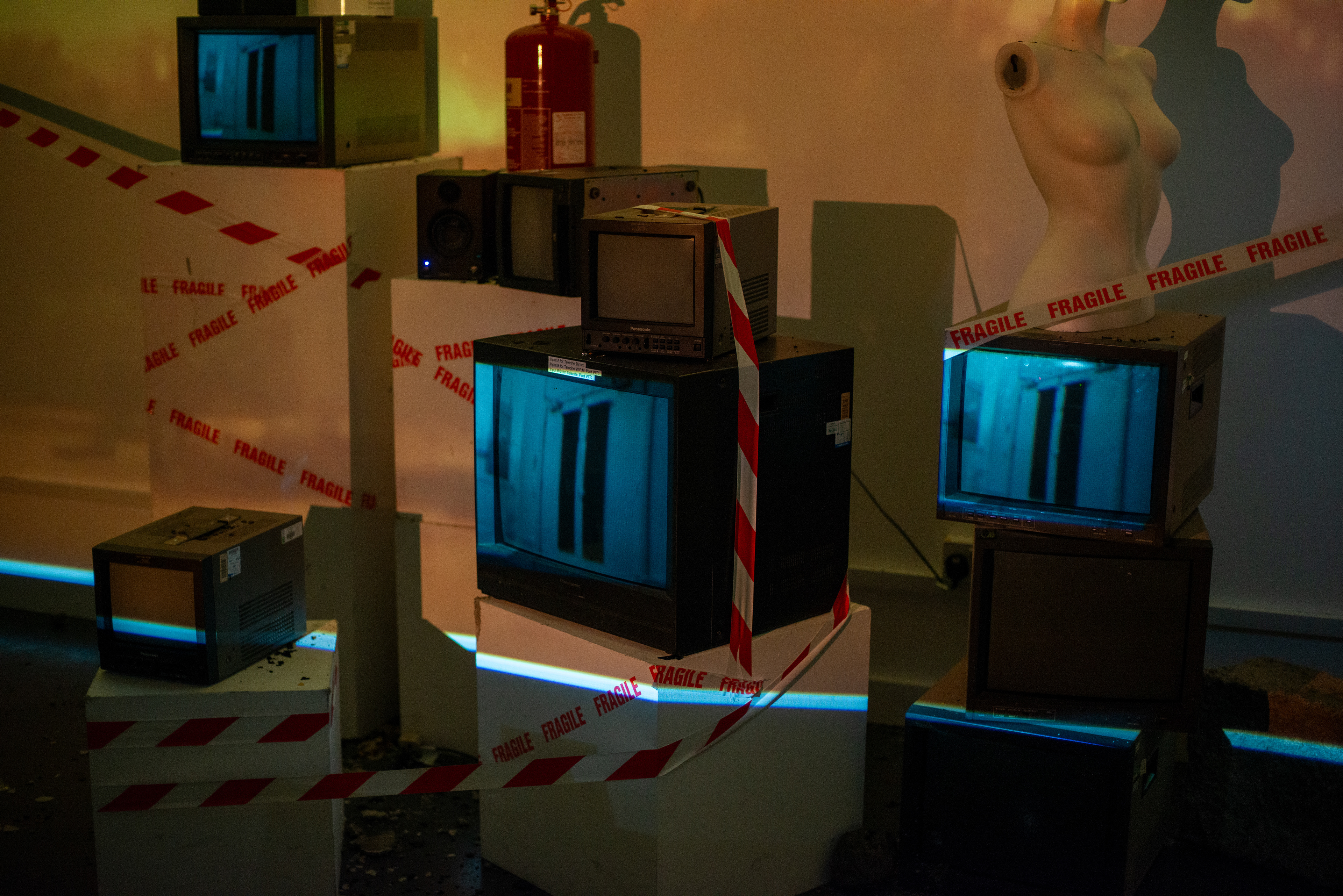
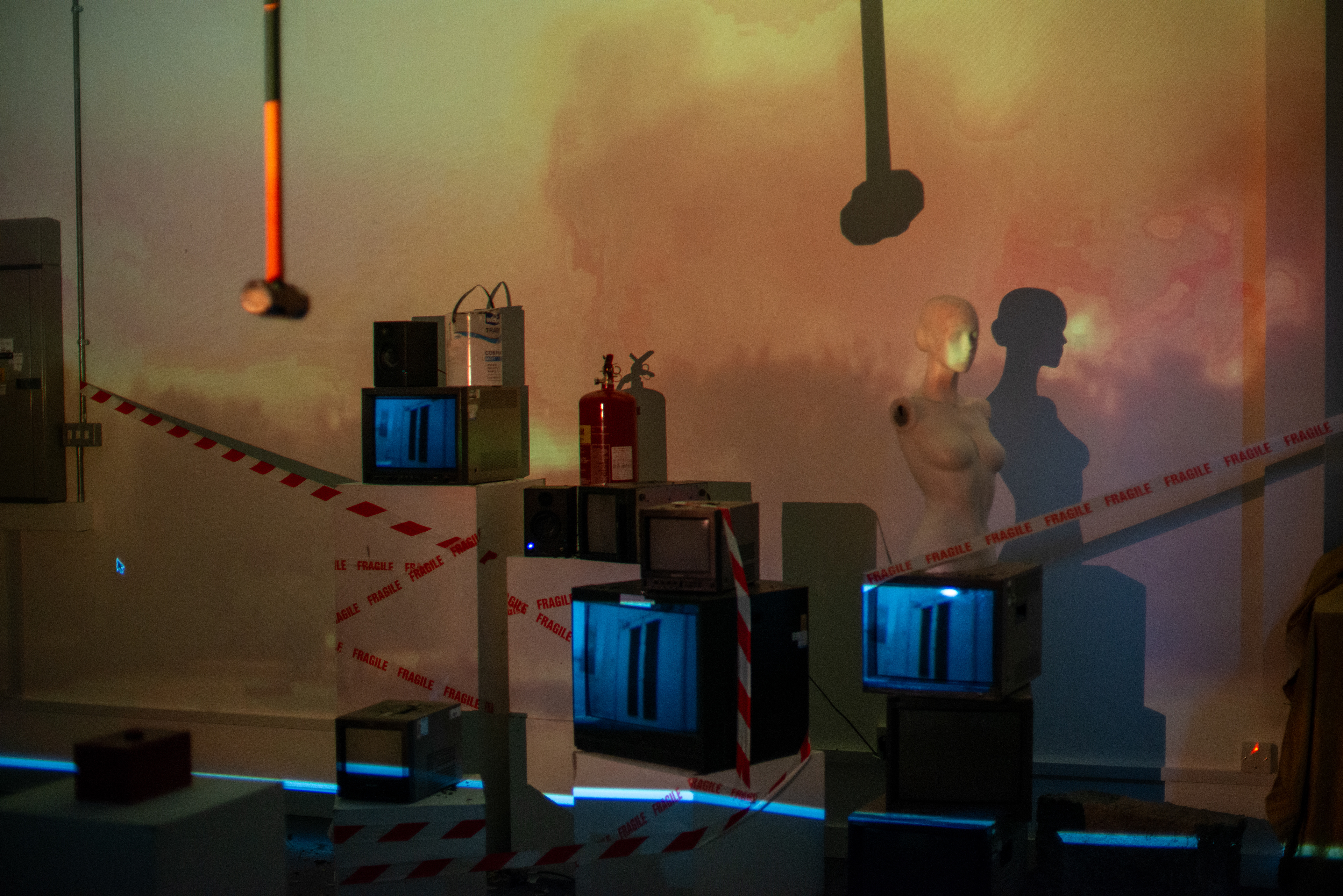
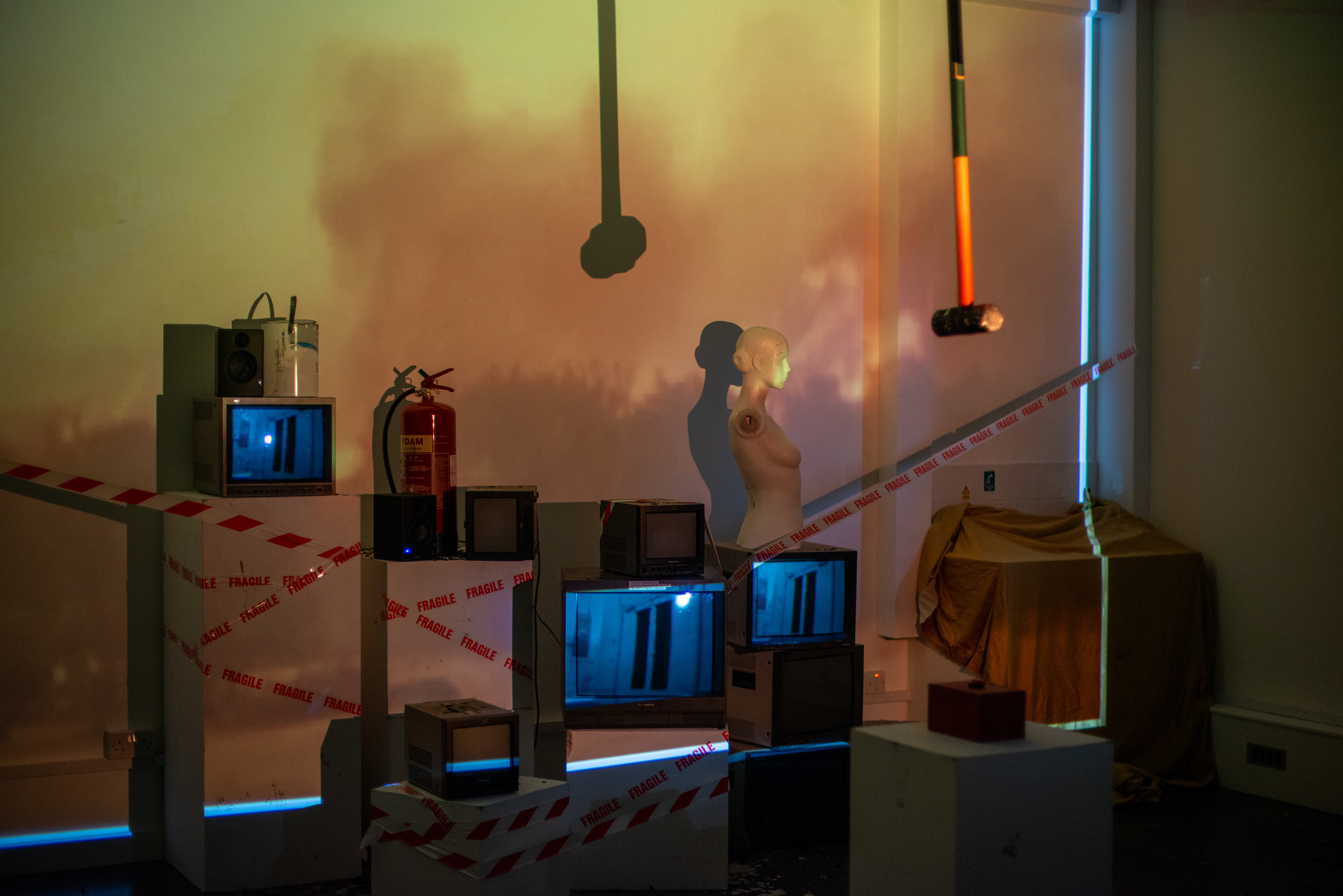
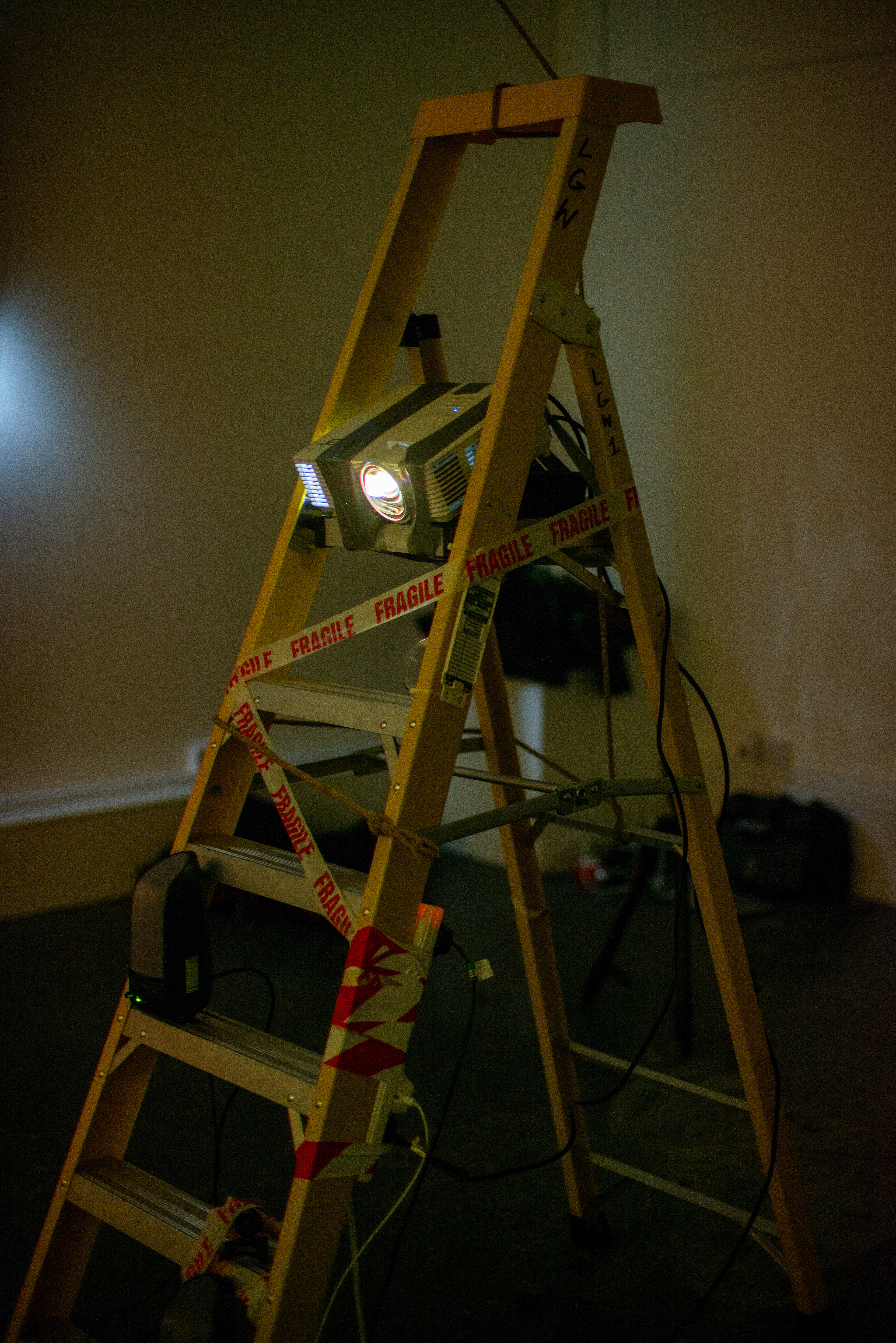
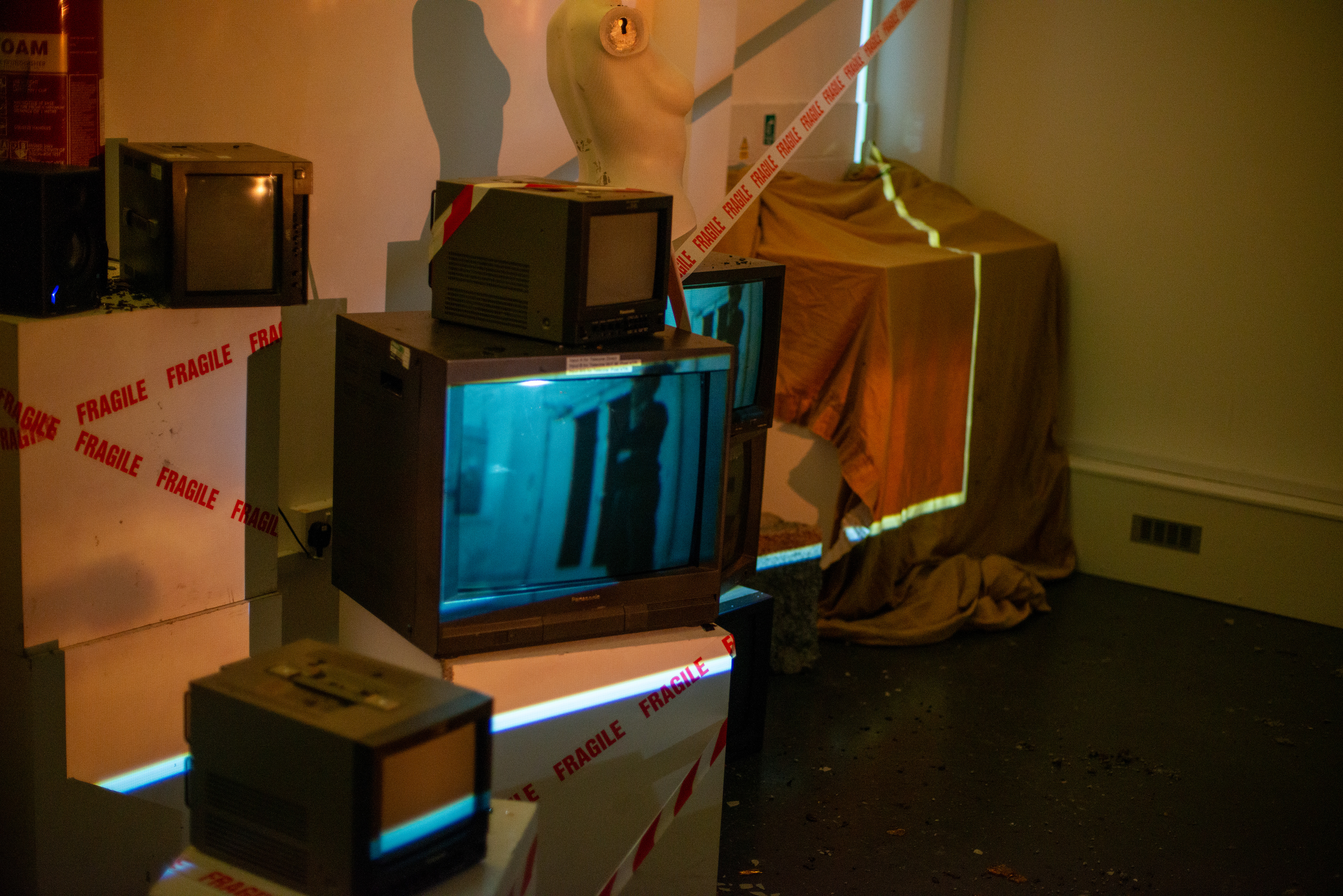
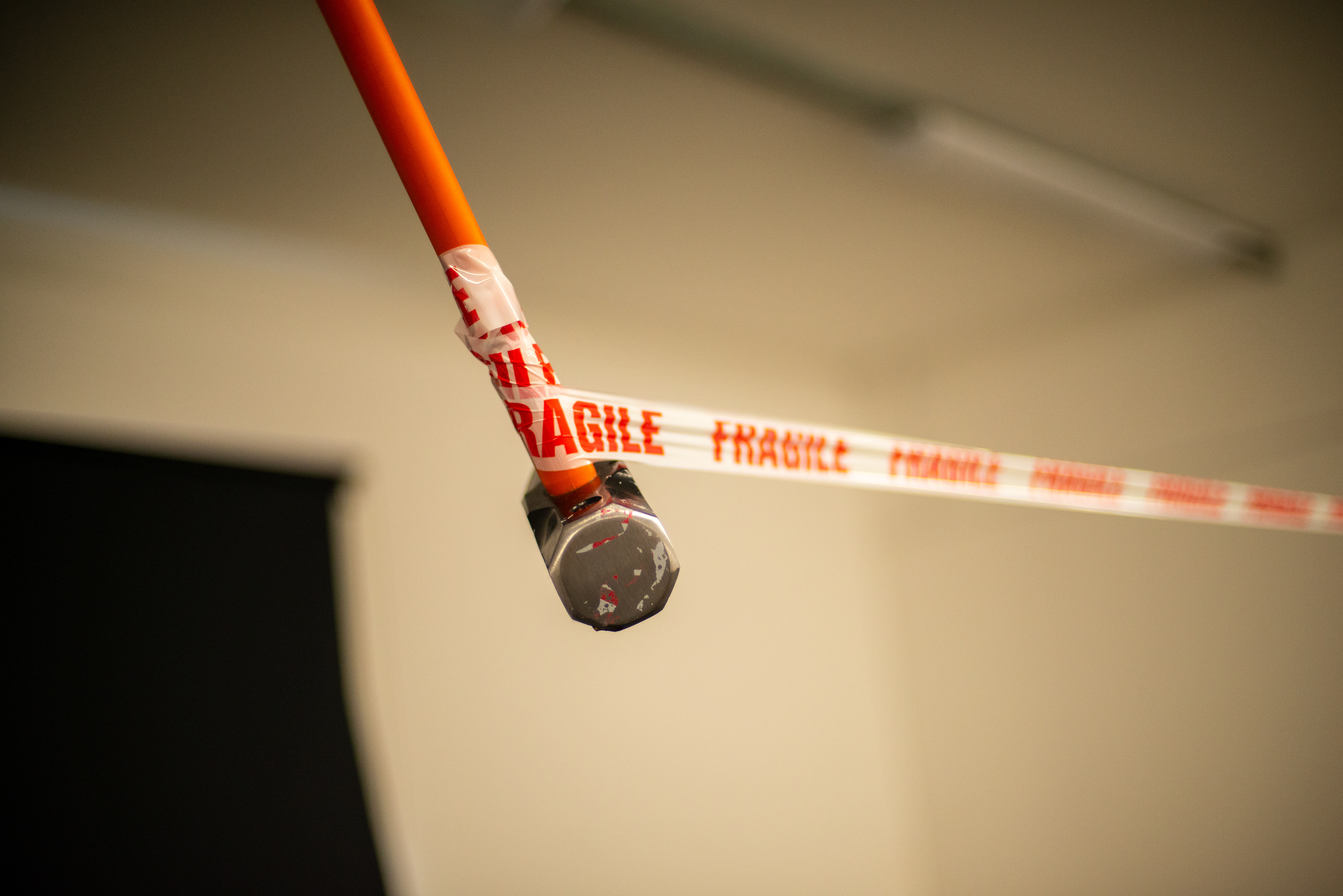
I then set up my camera on the back left corner of the room to film the installaltion, and set up the one Tess had booked out in the back right corner of the room. Almost immediately, mine was stood in front of.
Everything was wired up, plugged in, displaying correctly, and almost ready to go. Tess sent across the audio files for the radio sounds to me, which I could play from my phone, plugged in to the speaker set that was with the TVs, the main audio playing through the ladder-mounted speakers, as so (Image 2):
(click to enlarge.)
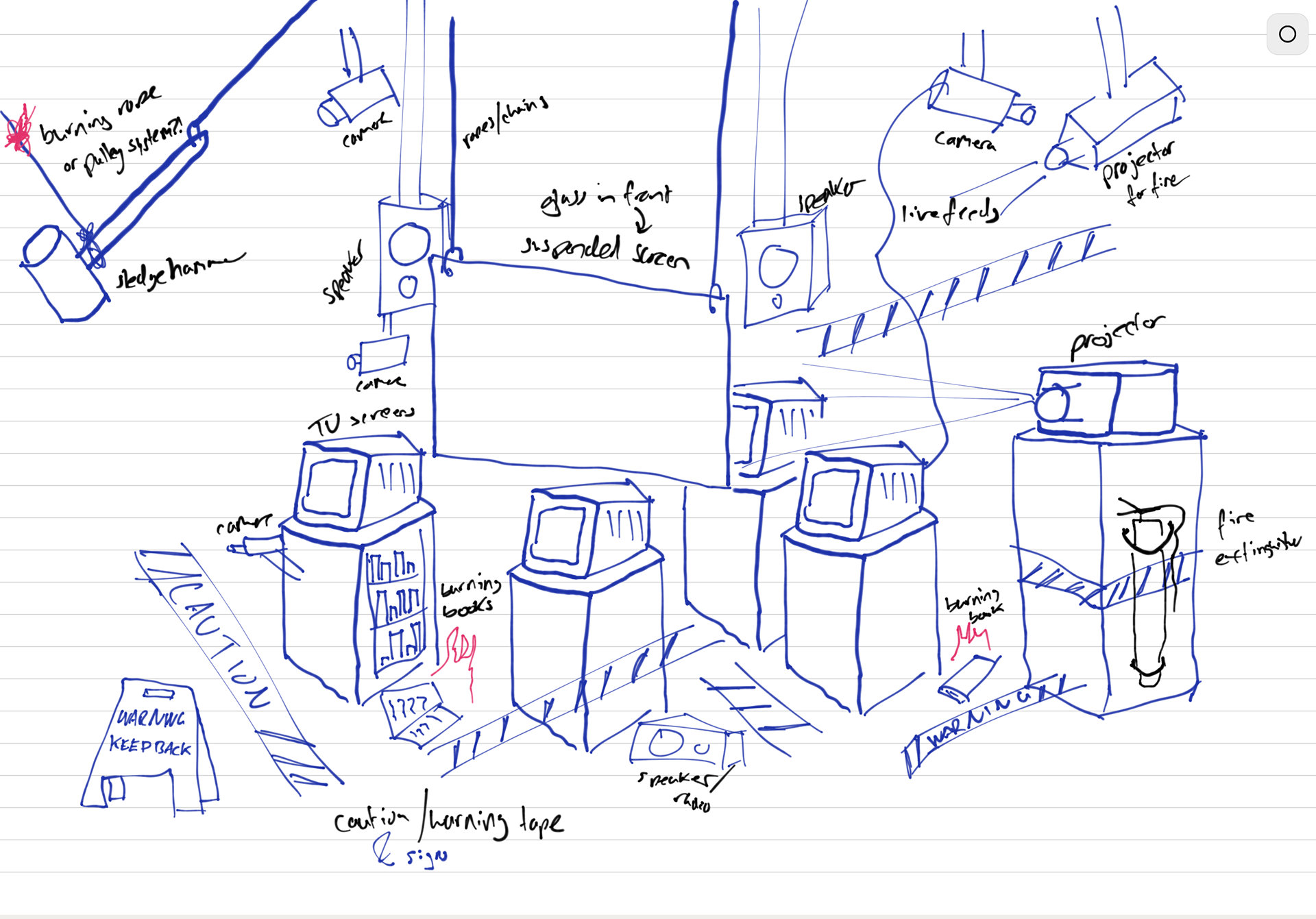
Initial installation sketch / diagram.

Final installation sketch / diagram.
Everything was working, except that there was a considerable delay on the camera, and the video seemed to be playing at about half the frame rate it should be, both which we had to just put down to how much was going on. The main thing was that, when the button was pressed, the video and audio would cut out (I would have to stop the 'radio' audio manually from my watch, connected to my phone), and the video of the sledgehammer swinging into the screens would play.
When it was all ready to go, everyone came in to the room, and I connected the two wires to start it...
Ultimately, I think it went well. The only thing that didn't work quite as we'd expected was that the video of the swinging hammer didn't play over the big screen, just on the little ones that had been displaying the camera footage. It wasn't a massive issue, as it still worked, just a slight annoyance. Me and Tess had also previously spoken about having a rising music play — I think we would have used the slowed down Radiohead track that I used in the video (above).
The biggest issue we had after everything was over was the frankly appalling clean-up process! Me, Eliana and Hannah, with the help of Chris, spent the evening trying to scrape the super-glue-esque sugarless off the floor, brushed and scrubbed away the concrete, and moped the entire floor. We barely scratched the surface, deciding to come in on Friday to finish it off. Chris very generously brought in paint scrapers and detergent for the floor, and me and Hannah borrowed a brush and a mop from reception to scour clean the floor. After a couple of hours, it seemed done, and so I started to repaint some of the podium surfaces that had been discoloured by the sugar glass. This was a truly insane job, and I am eternally grateful to Chris and Eliana, and especially Hannah who spent Friday helping me with it too. Below are some before and after photos that show how awful it was:
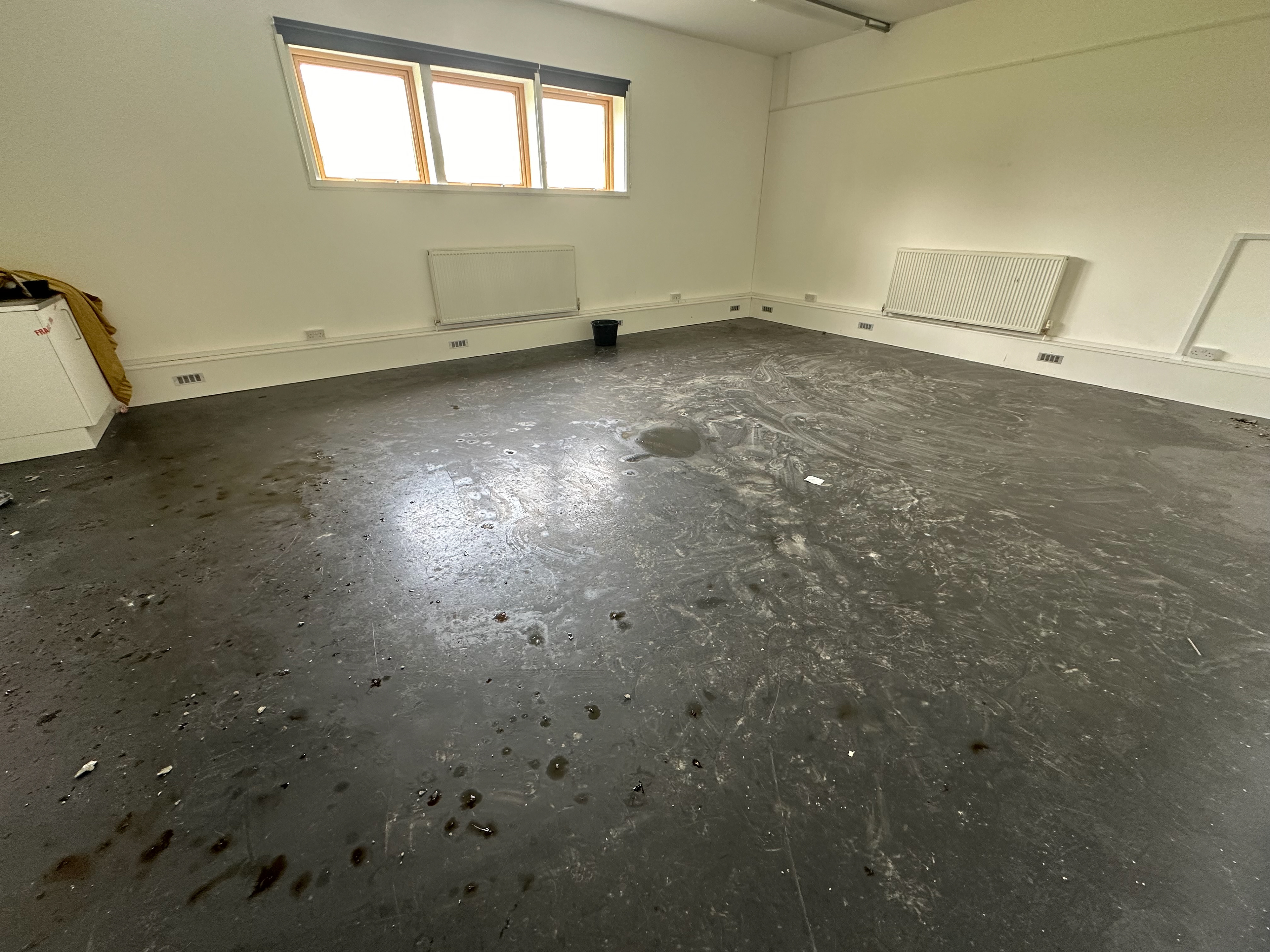
Before
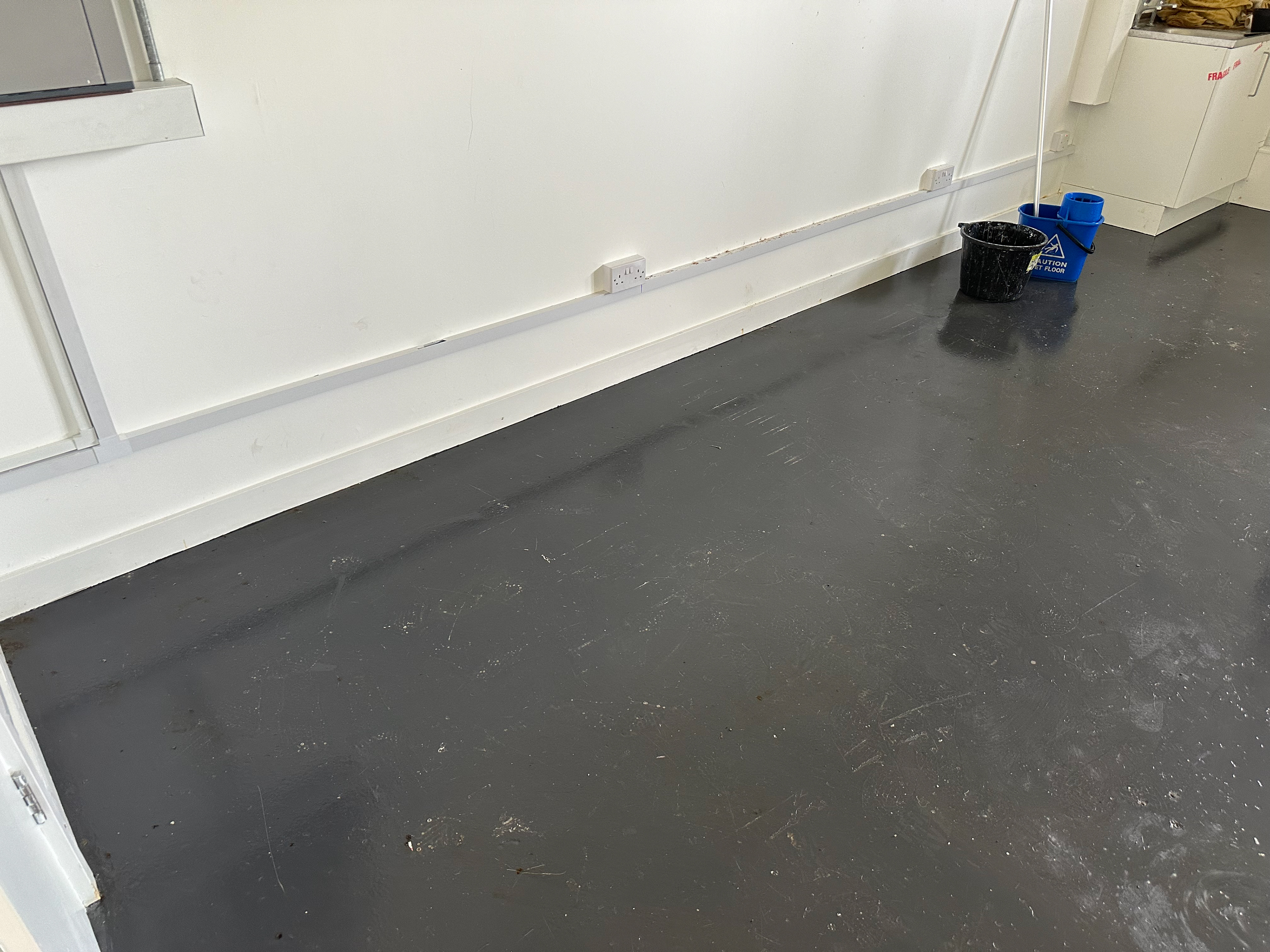
After
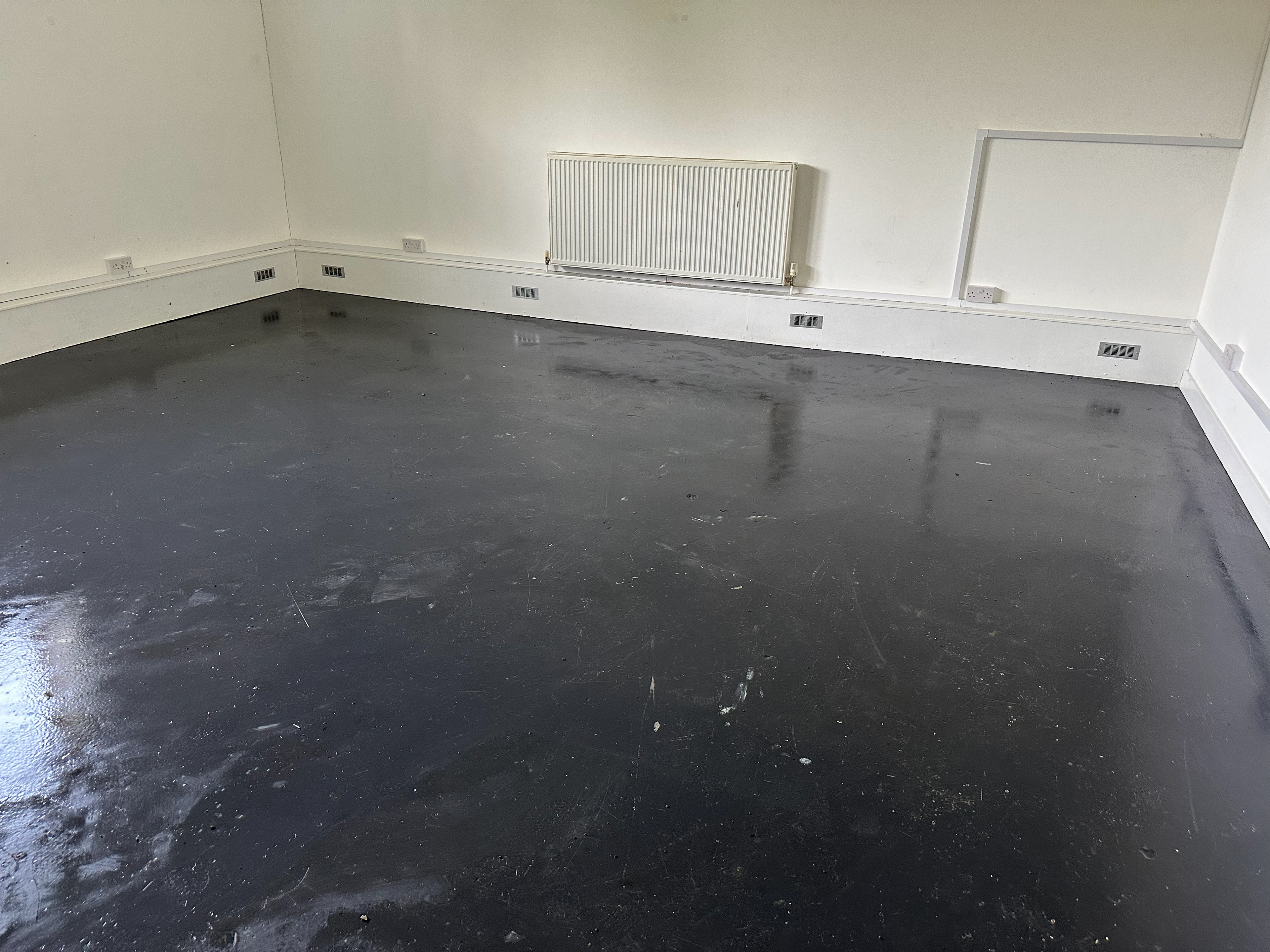
After
If I were to make changes now, I would enhance our speaker system, adding a subwoofer to allow for a low-frequency bass rumble, and incorporate the radio audio into MAX so that it would all be linked together and play smoothly, eradicating the human or device error of playing it through my phone.
I also would change the angle at which the hammer hangs, tying the rip to the top of the handle and then a second rope to its base, near the hammer's head, pulled back to give it a more clear angle of trajectory. I photographed how this would be, using more of the 'fragile' tape to do this.
